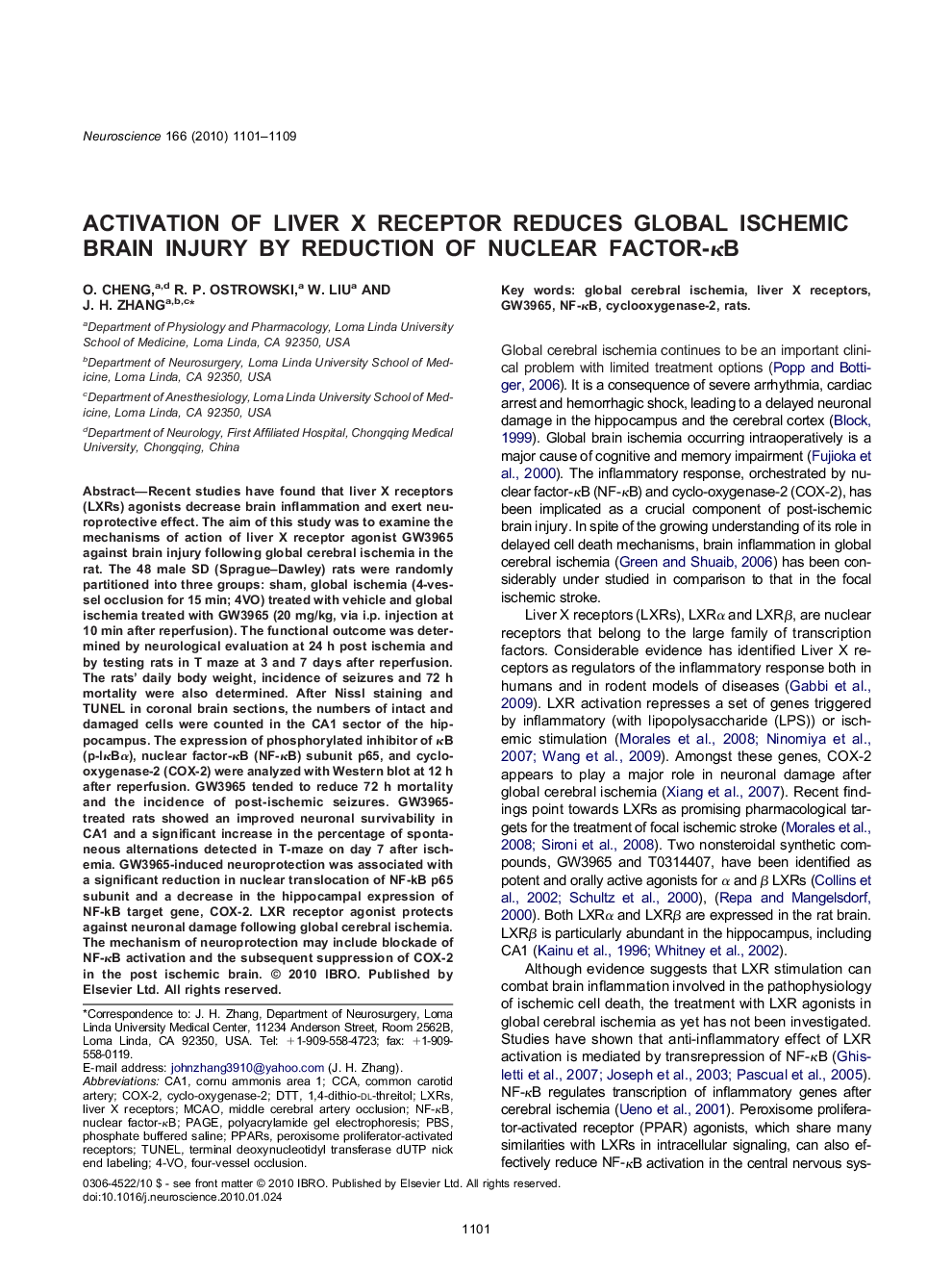| Article ID | Journal | Published Year | Pages | File Type |
|---|---|---|---|---|
| 4339389 | Neuroscience | 2010 | 9 Pages |
Recent studies have found that liver X receptors (LXRs) agonists decrease brain inflammation and exert neuroprotective effect. The aim of this study was to examine the mechanisms of action of liver X receptor agonist GW3965 against brain injury following global cerebral ischemia in the rat. The 48 male SD (Sprague–Dawley) rats were randomly partitioned into three groups: sham, global ischemia (4-vessel occlusion for 15 min; 4VO) treated with vehicle and global ischemia treated with GW3965 (20 mg/kg, via i.p. injection at 10 min after reperfusion). The functional outcome was determined by neurological evaluation at 24 h post ischemia and by testing rats in T maze at 3 and 7 days after reperfusion. The rats' daily body weight, incidence of seizures and 72 h mortality were also determined. After Nissl staining and TUNEL in coronal brain sections, the numbers of intact and damaged cells were counted in the CA1 sector of the hippocampus. The expression of phosphorylated inhibitor of κB (p-IκBα), nuclear factor-κB (NF-κB) subunit p65, and cyclo-oxygenase-2 (COX-2) were analyzed with Western blot at 12 h after reperfusion. GW3965 tended to reduce 72 h mortality and the incidence of post-ischemic seizures. GW3965-treated rats showed an improved neuronal survivability in CA1 and a significant increase in the percentage of spontaneous alternations detected in T-maze on day 7 after ischemia. GW3965-induced neuroprotection was associated with a significant reduction in nuclear translocation of NF-kB p65 subunit and a decrease in the hippocampal expression of NF-kB target gene, COX-2. LXR receptor agonist protects against neuronal damage following global cerebral ischemia. The mechanism of neuroprotection may include blockade of NF-κB activation and the subsequent suppression of COX-2 in the post ischemic brain.
